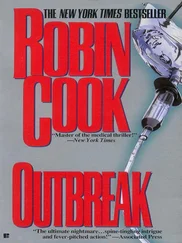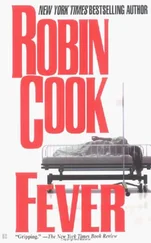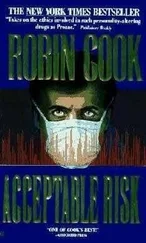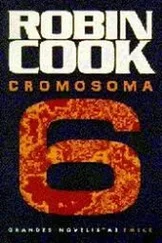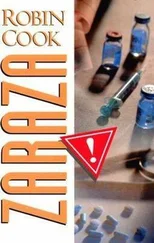A little after two, Janet gave an intramuscular injection to a patient whose room was at the far end of the corridor. On her way back to the nurses’ station, she decided to check in on Helen Cabot.
Earlier that morning and about an hour after Janet had added the coded medication to Helen’s IV and adjusted the rate, Helen complained of a headache. Concerned about her condition, Janet had called Dr. Mason and informed him of this development. He’d recommended treating the headache minimally and asked to be called back if it got worse.
Although the headache had not gone away after the administration of an oral analgesic, it had not grown worse. Nevertheless, Janet had checked on Helen frequently at first, then every hour or so throughout the day. With the headache unchanged and her vital signs and level of consciousness remaining normal, Janet’s concern had lessened.
Now, almost 2:15, as Janet came through the door, she was alarmed to discover that Helen’s head had lolled to the side and off the pillow. Approaching the bed, she noticed something even more disturbing: the woman’s breathing was irregular. It was waxing and waning in a pattern that suggested a serious neurological dysfunction. Janet phoned the nurses’ station and told Tim she had to speak with Marjorie immediately.
“Helen Cabot is Cheyne-Stoking,” Janet said when Marjorie came on the line, referring to Helen’s breathing.
“Oh no!” Marjorie exclaimed. “I’ll call the neurologist and Dr. Mason.”
Janet took the pillow away and straightened Helen’s head. Then she took a small flashlight she always carried and shined it in each of Helen’s pupils. They weren’t equal. One was dilated and unresponsive to the light. Janet shuddered. This was something she’d read about. She guessed that the pressure had built up inside Helen’s head to the point that part of her brain was herniating from the upper compartment into the lower, a life-threatening development.
Reaching up, Janet slowed Helen’s IV to a “keep open” rate. For the moment that was all she could do.
Soon other people started to arrive. First it was Marjorie and other nurses. Then the neurologist, Dr. Burt Atherton, and an anesthesiologist, Dr. Carl Seibert, rushed in. The doctors began barking orders in an attempt to lower the pressure inside Helen’s head. Then Dr. Mason arrived, winded by his run from the research building.
Janet had never met Dr. Mason, although she’d spoken with him on the phone. He was titularly in charge of Helen’s case, but in this neurological crisis he deferred to Dr. Atherton.
Unfortunately, none of the emergency measures worked, and Helen’s condition deteriorated further. It was decided that emergency brain surgery was needed. To Janet’s dismay, arrangements were made to transfer Helen to Miami General Hospital.
“Why is she being transferred?” Janet asked Marjorie when she had a moment.
“We’re a specialty hospital,” Marjorie explained. “We don’t have a neurosurgical service.”
Janet was shocked. The kind of emergency surgery Helen needed required speed. It did not require an entire neurosurgical service, just an operating room and someone who knew how to make a hole in the skull. Obviously with the biopsies they’d been doing, that expertise was available at the Forbes.
With frantic preparations, Helen was readied to leave. She was moved from her bed onto a gurney. Janet aided in the transfer, moving Helen’s feet, then running alongside holding the IV bottle aloft as the gurney was rushed to the elevator.
In the elevator Helen took a turn for the worse. Her breathing, which had been irregular when Janet had entered her room, now stopped altogether. Helen’s pale face quickly began to turn blue.
For the second time that day, Janet started mouth-to-mouth resuscitation while the anesthesiologist yelled for someone to get an endotracheal tube and an Ambu bag as soon as they got to the first floor.
When the elevator stopped and the doors opened, one of the fourth-floor nurses rushed out. Another kept the doors from closing. Janet continued her efforts until Dr. Seibert nudged her aside and deftly slipped in an endotracheal tube. After connecting the Ambu bag, he began to inflate Helen’s lungs to near capacity. The blue cast to Helen’s face transformed into a translucent alabaster.
“Okay, let’s go,” Dr. Seibert yelled.
The tightly packed group rushed Helen out to the ambulance receiving dock, collapsed the gurney, and pushed it inside the waiting vehicle. Dr. Seibert boarded with Helen, maintaining her respiration. The doors were slammed shut and secured.
With flashing light and piercing siren, the ambulance roared out of the parking bay and disappeared around the building.
Janet turned to look at Marjorie, who was standing next to Dr. Mason. She was consoling him with her hand on his shoulder.
“I can’t believe it,” Dr. Mason was saying with a halting voice. “I suppose I should have prepared myself. It was bound to happen. But we’ve been so lucky with our medulloblastoma treatments. With every success, I thought just maybe we could avoid this kind of tragedy.”
“It’s the people in Boston’s fault,” Ms. Richmond said. She’d appeared on the scene just before the ambulance had left. “They wouldn’t listen to us. They kept her too long.”
“We should have put her in the ICU,” Dr. Mason said. “But she’d been so stable.”
“Maybe they’ll save her at Miami General,” Marjorie said, trying to be optimistic.
“It would be a miracle,” Dr. Atherton said. “It was pretty clear her uncus had herniated below the calyx and was compressing her medulla oblongata.”
Janet repressed an urge to tell the man to keep his thoughts to himself. She hated the way some doctors hid behind their jargon.
All at once, as if on some unseen cue, the entire group turned and disappeared through the swinging doors of the Forbes ambulance dock. Janet was left outside. She was just as glad to be alone. It was suddenly so peaceful by the lawn. A huge banyan tree graced the grounds. Behind the banyan was a flowering tree Janet had never seen before. A warm, moist tropical breeze caressed her face. But the pleasant scene was still marred by the undulating siren of the receding ambulance. To Janet, it sounded like a death knell for Helen Cabot.
Tom Widdicomb wandered from room to room in his mother’s ranch house, alternately crying and cursing. He was so anxious he couldn’t sit still. One minute he was hot, the next freezing. He felt sick.
In fact, he’d felt so sick he’d gone to his supervisor and told him as much. The supervisor had sent him home, commenting that he was pale. He’d even noticed that Tom was shaking.
“You’ve got the whole weekend,” the supervisor had said. “Go to bed, sleep it off. It’s probably a touch of the ‘snowbird flu.’ ”
So Tom had gone home, but he’d been unable to rest. The problem was Janet Reardon. He’d almost had a heart attack when she’d come knocking on Gloria’s door minutes after he’d put Gloria to sleep. In an absolute panic he’d fled into the bathroom, sure that he’d been cornered. He’d gotten desperate enough to take his gun out.
But then the pandemonium in the room gave him the diversion he needed to get away. When he’d emerged from the bathroom, no one had even noticed. He’d been able to slip into the hall with his bucket.
The problem was that Gloria was still alive. Janet Reardon had saved her, and Gloria was still suffering, although now she was out of reach. She was in the ICU where Tom was not allowed to go.
Consequently, Alice still wouldn’t talk to him. Tom had continued to plead, but without success. Alice knew Tom couldn’t get to Gloria until she was transferred out of the ICU and put back into a private room.
Читать дальше



